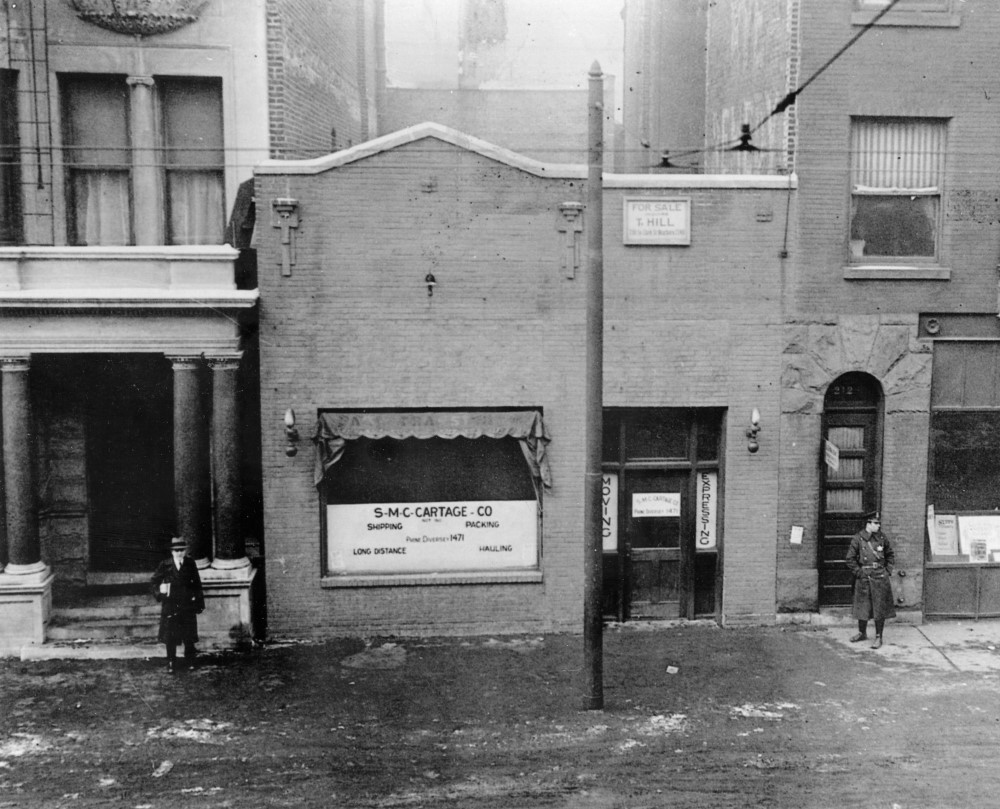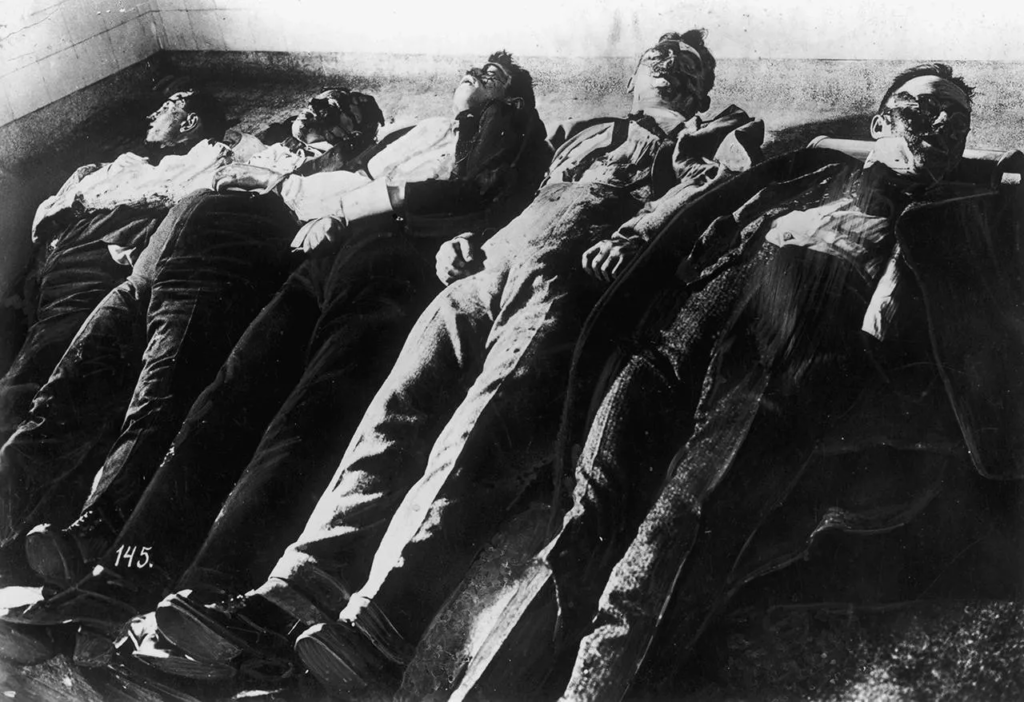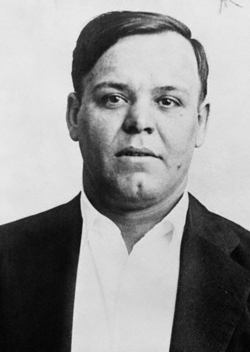Frank Gusenberg, a name synonymous with Chicago’s roaring 20s and its underworld of crime, emerged as one of the era’s most infamous figures. His life, steeped in violence and the illegal liquor trade, culminated in his tragic death during the St. Valentine’s Day Massacre, a bloody event that marked a turning point in America’s criminal history.
Born on October 11, 1893, in Chicago, Illinois, Frank Gusenberg grew up in a city that was rapidly transforming into a bustling metropolis. The son of German immigrants, he and his brother Peter quickly became entangled in the city’s criminal activities. As young men, they started their criminal careers with petty thefts and burglaries but soon graduated to more lucrative and dangerous enterprises.
During Prohibition, which began in 1920 and lasted until 1933, Frank and his brother became enforcers for the North Side Gang, one of the most powerful criminal organizations in Chicago, rivaled only by Al Capone’s South Side Gang. The North Side Gang was led by Dion O’Banion, and later by George “Bugs” Moran after O’Banion’s assassination in 1924. Under Moran’s leadership, Frank Gusenberg rose through the ranks to become one of the gang’s most feared hitmen.
The North Side Gang was heavily involved in the bootlegging industry, controlling numerous speakeasies and breweries throughout Chicago. This brought them into direct conflict with Capone’s gang, as both sought control over the lucrative liquor market. The competition between these gangs was fierce and often bloody, leading to a series of conflicts known as the Bootleg Wars.
Frank Gusenberg was not only a key player in these wars but also a prime target for the rival gang. His reputation as a ruthless enforcer made him a legendary figure in the underworld. He was known for his quick temper and willingness to use violence to settle disputes. Despite his tough exterior, those close to him knew a different side of Frank — a loyal brother and a man who, despite his profession, showed instances of generosity and protection towards his friends and family.
The conflict between the North Side Gang and Capone’s outfit reached its climax on February 14, 1929, in an event that would go down in history as the St. Valentine’s Day Massacre. On that day, seven members of Moran’s gang were lined up against the wall of a garage on North Clark Street and executed by four men using machine guns and shotguns. Frank Gusenberg was one of those men.

Despite being shot fourteen times, Frank was the only victim found alive when the police arrived. In a testament to his toughness, when asked by the police who had shot him, he reportedly replied, “Nobody shot me,” before succumbing to his injuries hours later. His death became a national sensation, highlighting the brutal reality of gang violence and the lawlessness of Prohibition-era Chicago.

The St. Valentine’s Day Massacre was a pivotal moment in the fight against organized crime in the United States. It led to increased law enforcement efforts to combat gang violence and, ultimately, the decline of many high-profile gangsters, including Al Capone, who was suspected of ordering the hit. Although Capone was never officially charged with the massacre, the event significantly damaged his public image and led to greater federal efforts to bring him and other gang leaders to justice.
Frank Gusenberg’s legacy is a complex one. On one hand, he was a violent criminal who lived by the gun and died by it. On the other, his death served as a catalyst for change, sparking outrage and leading to reforms that helped curb organized crime.
Today, Frank Gusenberg’s story is often overshadowed by the more famous figures of the era, like Capone and Moran. However, his life and death offer a stark reminder of the dangers of the Prohibition era and the human cost of the illegal liquor trade. His story is a cautionary tale of ambition, loyalty, and the brutal realities of life in the criminal underworld.
As we look back on the Prohibition era, it’s important to remember figures like Frank Gusenberg not just for their role in the violence of the time but also for their impact on American history. The events they shaped and were shaped by offer valuable lessons about the consequences of crime, the effectiveness of law enforcement, and the ongoing struggle between order and chaos.
In the end, Frank Gusenberg’s life story is a piece of the larger mosaic of American Mafia history, a narrative filled with conflict, tragedy, and the relentless pursuit of power. His tale remains a poignant chapter in the chronicles of Chicago’s gangland past, reminding us of the city’s transformation from a Prohibition battleground to a modern metropolis striving to escape the shadows of its notorious past.
